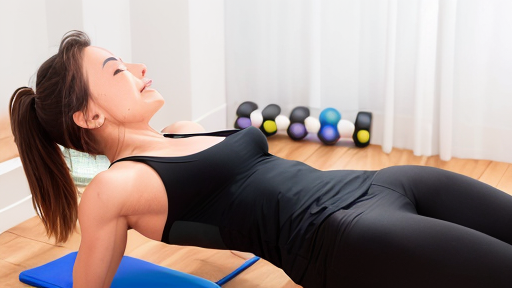The Ultimate Guide to Self-Myofascial Release: Say Hello to a Pain-Free Body!
The Ultimate Guide to Self-Myofascial Release: Say Hello to a Pain-Free Body!
Are you tired of dealing with muscle tension and pain? Self-myofascial release might just be the solution you’re looking for! With this ultimate guide, you’ll learn everything you need to know about self-myofascial release and how it can help you achieve a pain-free body.
What is self-myofascial release?
Self-myofascial release is a self-massage technique that uses a foam roller or other tools to apply pressure to your muscles and fascia. Fascia is a connective tissue that surrounds your muscles and organs, and it can become tight and restricted, causing pain and limiting your range of motion. Self-myofascial release helps to release this tension and improve your overall muscle function.
How does self-myofascial release work?
When you apply pressure to your muscles and fascia using a foam roller or other tools, you create a compression force that helps to break up adhesions and tension. This releases the tightness and allows the muscle to function properly. Self-myofascial release also helps to increase blood flow to the muscles, which can aid in recovery and improve overall muscle health.
The benefits of self-myofascial release
There are numerous benefits to incorporating self-myofascial release into your fitness routine. Here are just a few:
- Decreased muscle tension and pain
- Improved range of motion
- Increased blood flow and nutrient delivery to muscles
- Improved muscle recovery and performance
- Reduced risk of injury
- Enhanced relaxation and stress relief
How to perform self-myofascial release
To perform self-myofascial release, all you need is a foam roller and a few minutes of your time. Here are some tips for getting started:
-
Choose the right foam roller – there are a variety of foam rollers on the market, so it’s important to choose one that is right for your needs. A softer foam roller might be better for beginners, while a firmer roller might be better for more advanced users.
-
Target the right areas – focus on the areas where you feel the most tension or pain. This could be your back, hips, legs, or any other area that feels tight.
-
Apply the right amount of pressure – it’s important to use enough pressure to feel a sensation of discomfort, but not so much that it becomes painful.
-
Roll slowly and steadily – move slowly over the targeted area, applying pressure as needed. Take deep breaths and try to relax as much as possible.
-
Spend at least 1-2 minutes on each area – it’s important to spend enough time on each area to allow the muscle to release and relax.
Self-myofascial release techniques
There are a variety of self-myofascial release techniques you can use to target different areas of the body. Here are a few to try:
-
Foam rolling your back – lie on your back with a foam roller under your shoulder blades. Slowly roll up and down the length of your back, focusing on any tight or sore areas.
-
Foam rolling your hips – sit on the foam roller with your hands behind you for support. Cross your left ankle over your right knee and roll back and forth over your left glute. Repeat on the other side.
-
Foam rolling your legs – place the foam roller under your thighs and roll up and down the length of your legs, focusing on any tight or sore areas.
Conclusion
Incorporating self-myofascial release into your fitness routine can have numerous benefits for your overall muscle health and wellbeing. By following the tips and techniques outlined in this ultimate guide, you’ll be well on
You may like this video!
